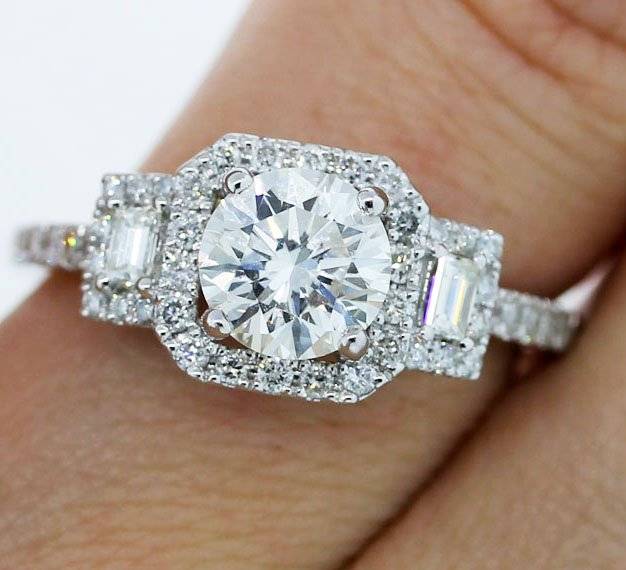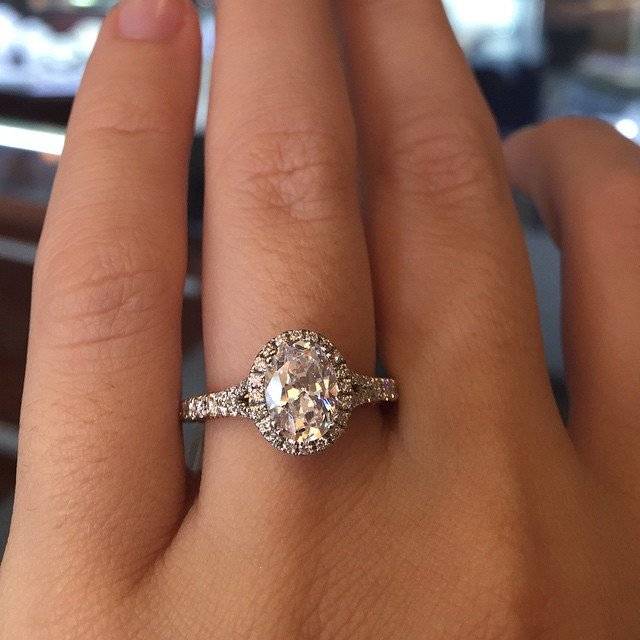
Everything You Need to Know About Diamond Cut
Yesterday, we talked all about diamond carat weights, and how to use the scale to get the best deal on a diamond using this price factor. Today we're diving into everything you need to know about diamond cut. And while most people thing carat weight is the most important of the 4 C's, we argue that Cut is actually the most important.
The cut of a diamond is the term used to describe its polish, symmetry, and proportions. It does not refer to the diamond’s shape – for instance a princess cut or round – but instead refers to these three factors that have a huge impact on a diamond’s brilliance.
While each of the 4 c’s that define a diamond determine its value, cut is one of the most important characteristics and greatly impacts a diamond’s beauty.
There are several types of cut styles (for instance brilliant or Old European), but for the most part they are symmetrical arrangements of various facets that a diamond cutter carves out of a rough diamond. The cutting process makes the stone as beautiful as possible, and allows the diamond to reflect and refract light in the most beautiful way possible. The diamond’s cut primarily affects its fire, brilliance, and scintillation.
Fire: refers to the colors that a diamond’s interior reflects; they’re flashes of color on the visible spectrum that result from the diamond scattering white light into the colors of the rainbow.
Brilliance: is the reflection of that white light after it hits a diamond’s facets. It is the contrast between these white light flashes and the shadows created by the diamond’s cut. The greater the contrast, the greater a diamond’s brilliance, and the better its cut.
Scintillation: is the amount of sparkle a diamond produces, or the light source illuminating it is moved.
Like we mentioned before, the diamond’s cut can be defined as its polish, symmetry and proportions. The polish and symmetry aspects of this definition refer to a diamond’s facets. The facets on a diamond are the smooth, flat surfaces on a diamond that are polished after cutting; a brilliant diamond has 58 facets that – on a well cut diamond – will maintain good symmetry.
The proportions of a diamond are determined by the facets’ shape, size, and angles. The way that the facets are cut affects the amount of light that the diamond reflects and refracts, and a cut grade demonstrates how well the facets maximize this light to create the brilliance, fire and scintillation I mentioned before. The proportions also refer to a diamond’s depth.
When cutting a diamond, the cutter must also maximize the amount of smooth, polished diamond they can cut from the rough. A cutter can choose between a better cut diamond with a smaller carat weight (but higher price per carat, because of the better cut grade) or a larger diamond with a greater carat weight and less than ideal proportions.
A diamond cut on the shallow side will create a lower angle for light to enter and reflect on the slanted side facet of a diamond, called the pavilion, so it will instead enter and escape through the bottom of the diamond where the effect will be hidden by a mounting or its wearer.
A diamond cut too deep will allow the light to enter the diamond, but it won’t be able to reflect back to its surface because the angle of the pavilion is too steep. Again, the light will refract and exit through the bottom of the diamond.
In a properly cut diamond, the light will strike each pavilion facet at just the right angle, reflecting the light back through the top of the diamond and producing fire, brilliance and scintillation. The depth measurements of a cut diamond are determined by measuring, in millimeters, from the top of the diamond (called a crown) to the bottom (called a culet).
A diamond’s cut grade takes into consideration all the factors mentioned so far, along with culet size (the smaller the better), girdle width (the outer edge of the diamond, where the crown meets the pavilion), polish and symmetry. So when evaluating a diamond for purchase, remember that the cut grade represents all of these various aspects and should be the primary way to evaluate the diamond, along with the other 3 c’s.
That being said, be wary of inflated cut grades that sound more like hyperbole than descriptors. Because there is no industry-wide standard for cut grading, jewelers can assign a diamond any cut grade they’d like and claim that their diamonds are “hyper-ideal” or “super-excellent.”
The GIA recently established a diamond cut grading chart and their grades are the examples we’ll use today.
A GIA grade of excellent is the highest. It means the diamond has maximum fire and brilliance, and that the diamond reflects almost all light that enters.
The next grade is “Very Good”; these diamonds properly reflect the majority of light that enters; it’s virtually identical to a diamond with an excellent cut, but its proportions are a notch less than an excellent’s. For round brilliants, Raymond Lee Jewelers recommends opting for excellent or very good cuts and being flexible with color and clarity for maximum impact and the best value.
A diamond with a “good” cut grade reflects most of the light that enters it. A good cut grade still creates a beautiful diamond, and for fancy shapes a cut grade of good still has fantastic proportions and is a great value.
The cut grade of “Fair” means that a diamond lets a significant amount of the light entering it escape from its bottom and size; this reduces the diamond’s fire and brilliance, and will have a noticeable impact in diamonds over half a carat.
A “poor” cut grade is assigned to a diamond that allows the majority of light that enters to escape through the sides and bottom, giving it a dull appearance. Most reputable jewelers do not carry diamonds of a poor cut grade, and Raymond Lee Jewelers doesn’t recommend sacrificing such an important factor for price, regardless of the color, carat weight or clarity.
A smaller diamond with a slightly lower clarity grade like VS1 and a bit higher on the color scale, for instance an I color, will still be breathtaking if its cut grade is excellent or very good.
[caption id="attachment_34746" align="aligncenter"] A perfect example - center stone is a 1.08 carat, I color, VS1 clarity with a very good cut grade. This ring is sold out, but we can easily make it again![/caption]
A perfect example - center stone is a 1.08 carat, I color, VS1 clarity with a very good cut grade. This ring is sold out, but we can easily make it again![/caption]
When shopping for a diamond, if your preference isn’t necessarily a round brilliant, your budget will have even more wiggle room, as a good or even fair cut grade will still be lovely on a diamond with otherwise good characteristics.
Because a diamond’s cut is the biggest determining factor in its brilliance and its beauty, we recommend buying the diamond with the best cut grade available in your budget. A diamond is valued first and foremost for its sparkle, and this factor is determined almost entirely by how well it is cut.

